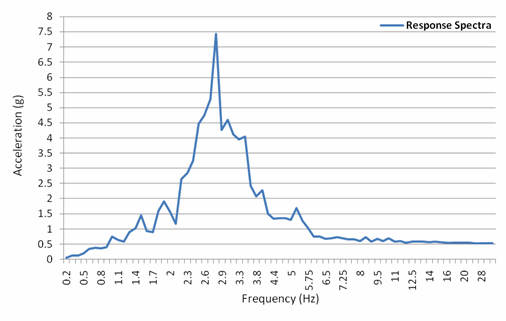Fixed support conditions are applied at the second node of each spring, as shown in Figure 12.3: Elastic Supports Meshed with COMBIN14 Elements.
The input spectrum is a one-percent acceleration response spectrum, represented here:
The input-acceleration response is applied in the X direction. It exhibits a sharp,
highly amplified peak at the fundamental frequency of the structure/soil system. Its
characteristics are fZPA ≈ 16.50
Hz and ZPA = 0.54 g.
Generally, piping systems experience this type of seismic input instead of ground motion associated with broad-banded response spectra. For this study, the unbroadened spectrum is used to provide a direct comparison to the time history analysis results.
Following is the input-acceleration time history along the X direction:
The ground motion is consistent with the input-acceleration response spectrum shown in Figure 12.4: Input-Acceleration Response Spectra (1% X Direction).
For full-transient and response-spectrum analyses performed using all three-directional inputs, the same input is considered for both horizontal X and Z directions. In the vertical Y direction, the input is considered to be 2/3 of the horizontal input.



